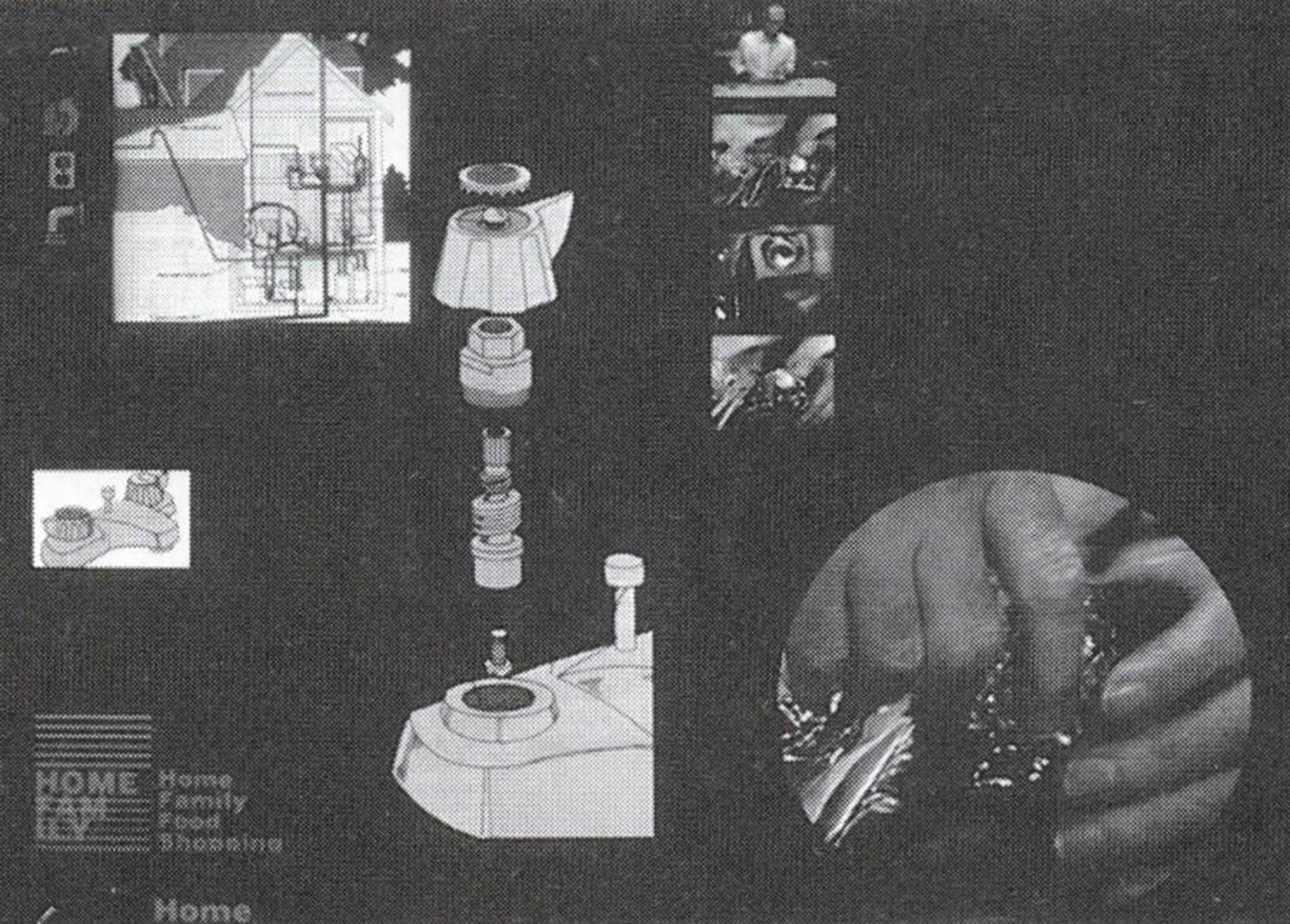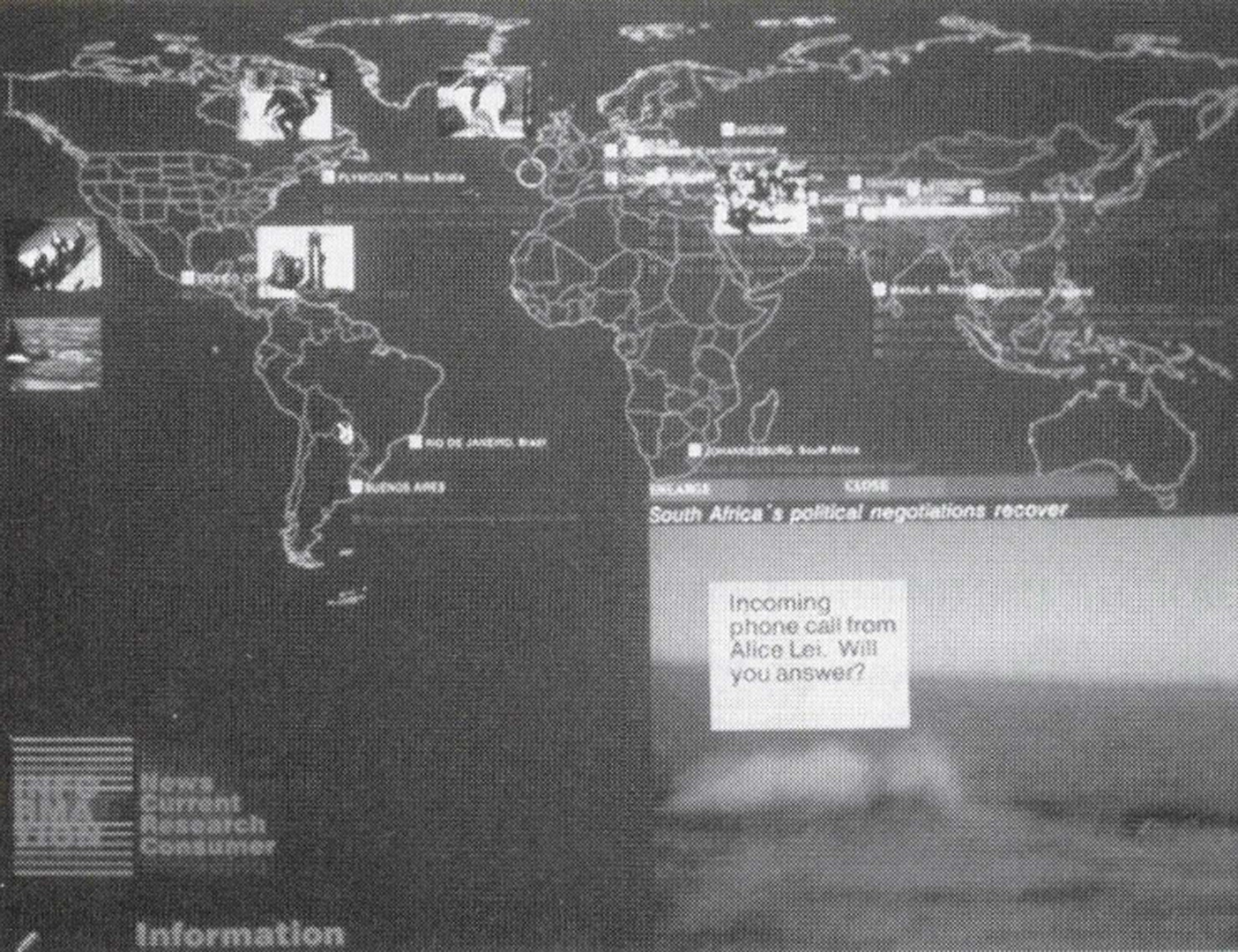“Dick’s World” by Oakley
Conference:
Experience Type(s):
Entry Number: 06
Title:
- Dick’s World
Program Title:
- Designing Technology
Organizer(s)/Presenter(s):
Collaborator(s):
Project Affiliation:
- IBM Corporation and Muriel Cooper and Associates
Description:
Dick’s World was put together about a year ago in response to IBM’s search for a competitive multimedia interface. Several applications had been released with several different interfaces, none of which followed any sort of basic design principles. It was obvious that graphic designers had not been an integral part of the “interface design team”-they had only been asked to put lipstick on the bulldog.
As a result, the members of the IBM Design Program spent a few nights sketching out what we thought the future might be. Interactive HDTV was high on the list because of all the alliances going on between entertainment, cable TV, computer, and consumer electronics companies. Since there was also a strong future involving Personal Digital Assistants (PDAs), we were looking for an interface that would work on screens ranging in size from calculators to living room walls. We asked Muriel Cooper and Associates (MC&A) to create a demonstration that would be presented to the IBM senior management. MC&A merges the disciplines of design and programming and this exercise, we hoped, would point out the value that graphic design can introduce to the interface design process. That point was clearly understood and steps are now being taken to integrate design into several development labs.
Dick’s World does not answer all the interface issues, but two concepts become apparent. One is that through the use of traditional graphic design skills, a wealth of information can be displayed and arranged so that the viewer does not get confused. The other is that one can navigate through this information without the help of menus, dialog boxes, and most of the other administrative debris seen today. The interface becomes invisible-it is the information alone that is presented. Since this solution also does not deal effectively with varying screen sizes, the need for continued investigation is clear.
In the not-so-very-distant future, as software applications merge the various mediums of film, sound, illustration, and typography, so must companies merge the appropriate skills into their software development.






